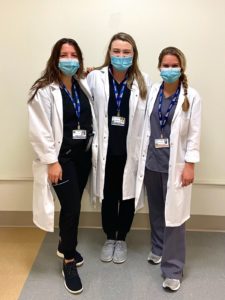Resident and Family Satisfaction at Skilled Nursing Facilities has never been more important than it is right now.
Without question, there are certain parts of my job that I absolutely love. Playing an important role in having satisfied residents and families is on the very top of the list. Speech therapists do not always interact with each resident nor their families. In all honesty, when we do, it is often when there is an issue that needs some type of resolution. There are at least two primary concerns; safe diets and improving communication.
Let’s tackle diets first.
The Speech-language pathologist’s job in a Skilled Nursing Facility is to ensure the resident maintains a safe airway while eating. Not performing our job correctly leads to a myriad of negative consequences. Among these are aspiration, aspiration pneumonia, hospitalization, or a choking incident. Part of this job is to recommend a safe and appropriate diet for the resident. That does not go over well all the time. Residents and families may see an altered diet as less appealing to the eye. Unfortunately, I have heard family members refer to puree as “baby food.”
Our primary goal is to make people safe on their diet. However, our secondary goal is to make them happy and working with residents to increase their swallow function. There are few things that make me happier than working with an individual and help them achieve their prior level of function and eat regular foods. It is a wonderful feeling to share time with a resident during the generalization period of treatment and watch them have their first cup of regular coffee.
Secondly, I will leave you with a personal story of how I, as a treating SLP, interacted with a resident and family.
When I was a young speech therapist at a SNF with a trach and vent unit, I worked closely with the respiratory therapist and nursing staff on a complex case. The resident needed to increase the lung capacity, strength, and endurance of the resident to the point where he was able to tolerate a Passy Muir Valve.
The Passy Muir Valve (PMV) is a single-direction valve that allows air to be taken in through the trach. During exhalation, the PMV passes the air up and passes the vocal cords. This allows the resident the opportunity to produce sound. This resident and I worked for weeks on strength and endurance. The big day came when he became able to pick up a phone, call his wife and tell her “I love you” for the first time in over 5 months.
This is the best example I have on how we interact with residents and their family. Happy Better Speech and Hearing Month!
About the Author: Michael V. Webb, CCC-SLP is the CEO of Language Fundamentals. He is a graduate from The College of Saint Rose in Albany, NY with his master’s degree in Communication Disorders and more recently earned his Master of Healthcare Administration from the University of Ohio. He has presented at the American Speech-Language and Hearing Association, on the use of assistive technology and the New York Speech-Language-Hearing Association on student and clinical fellow support and mentorship, New York State Health Facilities Association, as well as the National Convention of State Veterans Homes on Patient-Driven Payment Model implementation and the new role of Speech-language pathology.



